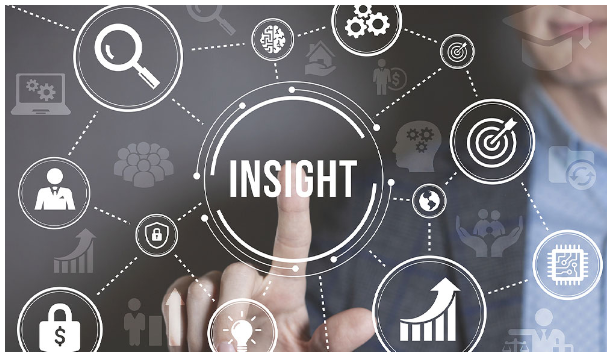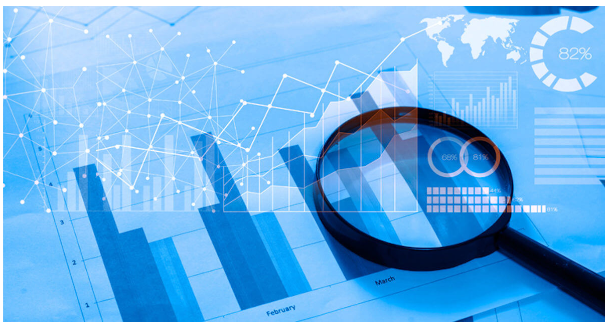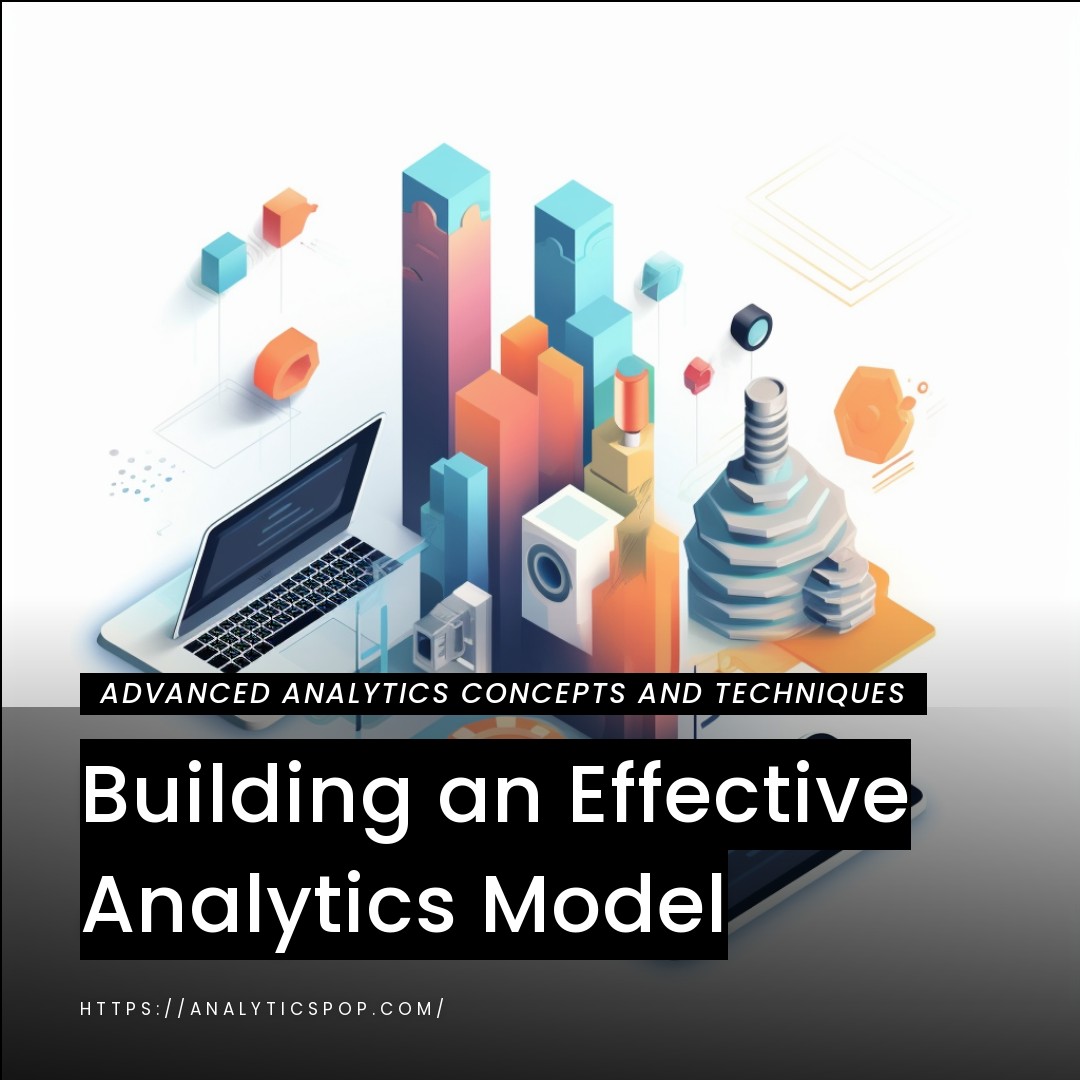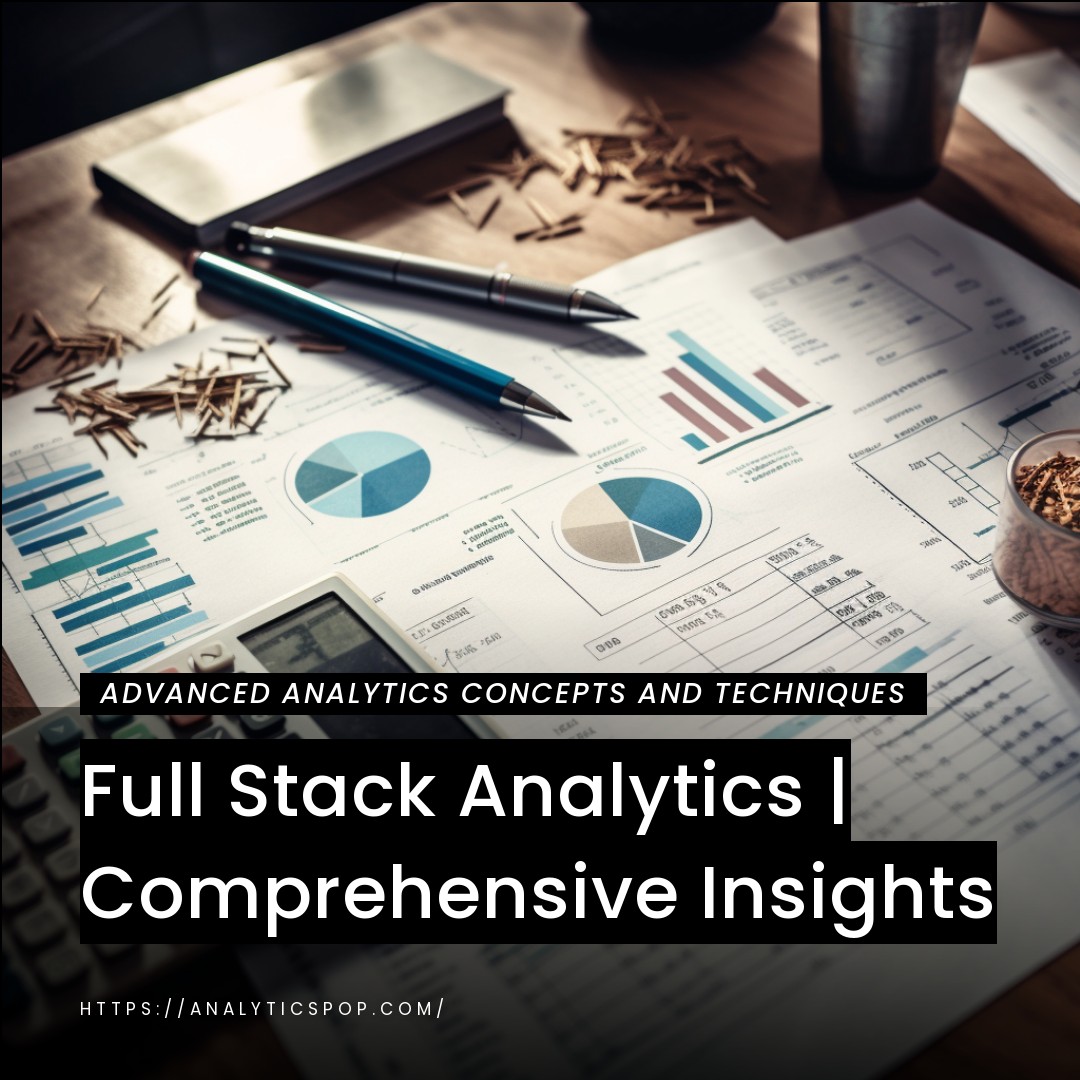Data analytics workflow is pivotal in transforming raw data into actionable insights. Organizations can extract valuable information that drives informed decision-making following a structured process.
The workflow typically consists of several key stages.
- First, data collection is crucial, ensuring a solid foundation for analysis. Various sources, such as databases, APIs, or social media platforms, can provide relevant data points.
- Once the data is collected, the next step is data preprocessing and cleaning. This involves handling missing values, removing duplicates, and standardizing formats to enhance data quality and consistency.
- Afterward, data exploration and analysis come into play. Techniques such as statistical analysis, data visualization, and machine learning algorithms can be utilized to uncover patterns, trends, and correlations within the data. These insights allow businesses to make informed decisions and gain a competitive edge.
- Upon completing the analysis, it’s time to derive actionable insights. This involves interpreting the findings and translating them into practical recommendations or strategies. For example, identifying customer preferences from sales data can lead to targeted marketing campaigns or product improvements.
- Finally, the insights are communicated effectively through reports, dashboards, or presentations to stakeholders, ensuring their understanding and facilitating informed decision-making.
The data analytics workflow encompasses data collection, preprocessing, exploration, analysis, deriving insights, and effective communication. This systematic approach empowers businesses to leverage the power of data and convert it into actionable intelligence that drives success.
Explanation of the importance of a structured data analytics workflow
A structured data analytics workflow is of paramount importance for several reasons.
- Firstly, it provides a systematic approach to handling data, ensuring that all necessary steps are taken to extract meaningful insights. This structure helps organizations take into account critical elements and take into account the analysis process.
- Secondly, a structured workflow promotes data quality and consistency. By following standardized data collection, preprocessing, and analysis processes, organizations can minimize errors, handle missing values, and ensure that data is in a usable format. This enhances the accuracy and reliability of the insights derived from the data.
- Thirdly, a structured workflow enables efficient collaboration among team members involved in the analytics process. Each workflow stage can be clearly defined, allowing team members to understand their roles and responsibilities. This collaborative approach fosters effective communication, reduces redundancy, and improves overall productivity.
- Furthermore, a structured workflow facilitates reproducibility and scalability. By documenting the steps followed in each stage, organizations can reproduce the analysis in the future, validate results, and build upon previous work. This scalability ensures that data analytics processes can be applied to larger datasets or expanded to cover additional areas of interest.
- Additionally, a structured workflow helps organizations prioritize their efforts and resources. By clearly defining objectives and timelines for each stage, businesses can allocate resources efficiently, focus on high-value tasks, and address critical business challenges promptly.
- Lastly, a structured workflow promotes accountability and transparency. It allows organizations to track progress, identify bottlenecks, and evaluate the effectiveness of their analytics initiatives. This transparency ensures that the analysis aligns with business goals and enables continuous improvement and optimization of the workflow.
A structured data analytics workflow is crucial for maximizing the value derived from data. It enhances data quality, promotes collaboration, supports reproducibility and scalability, helps with resource allocation, and fosters accountability and transparency. By following a structured approach, organizations can effectively transform data into actionable insights and gain a competitive edge in today’s data-driven business landscape.

Overview of the value of converting raw data into actionable insights
Converting raw data into actionable insights holds immense value for businesses in today’s data-driven landscape. Here’s an overview of why this process is crucial:
- Informed Decision-Making: Actionable insights provide the foundation for informed decision-making. Businesses gain valuable insights into customer behavior, market trends, operational inefficiencies, and more by analyzing and interpreting data. These insights enable organizations to make data-backed decisions that drive business growth, improve efficiency, and optimize resource allocation.
- Competitive Advantage: Extracting actionable insights from data can provide a significant competitive advantage. Businesses can stay ahead of their competitors by understanding customer preferences, market dynamics, and emerging trends. These insights help identify untapped opportunities, develop targeted strategies, and create products and services that meet evolving customer needs.
- Enhanced Operational Efficiency: Actionable insights allow businesses to identify bottlenecks, streamline processes, and optimize operations. Organizations can identify improvement areas, reduce costs, and enhance overall efficiency by analyzing production, supply chain, or customer service data. This can increase productivity, reduce waste, and improve customer satisfaction.
- Personalized Customer Experiences: Actionable insights enable businesses to deliver personalized customer experiences. Organizations can segment their audience and tailor their offerings by analyzing customer data, including demographics, preferences, and purchase history. This customization enhances customer satisfaction, fosters loyalty, and drives revenue growth.
- Risk Mitigation: Data analysis helps businesses proactively identify and mitigate potential risks. Organizations can detect fraudulent activities, cybersecurity threats, or operational risks by monitoring data patterns and anomalies. Timely identification and intervention based on actionable insights can minimize financial losses, protect reputation, and ensure business continuity.
- Innovation and New Opportunities: Converting raw data into actionable insights often uncovers new opportunities and sparks innovation. By analyzing market trends, consumer feedback, or emerging technologies, businesses can identify gaps in the market or areas where they can differentiate themselves. These insights fuel innovation, guide product development, and help organizations stay relevant in a rapidly evolving landscape.
- Measurable Results and ROI: Actionable insights provide measurable results and a clear return on investment (ROI). By setting specific goals, tracking key performance indicators (KPIs), and analyzing data, businesses can monitor the impact of their actions. This data-driven approach allows organizations to optimize strategies, allocate resources effectively, and justify investments based on tangible results.
Converting raw data into actionable insights empowers businesses to make informed decisions, gain a competitive edge, enhance operational efficiency, deliver personalized experiences, mitigate risks, drive innovation, and achieve measurable results. It’s a transformative process that unlocks the true potential of data and helps organizations thrive in a data-centric world.
Data Collection and Preprocessing
Data collection and preprocessing are essential steps in the data analytics process. Let’s explore their significance in more detail:
Data Collection involves gathering relevant data from various sources to support analysis and decision-making. Collecting data that aligns with the study’s objectives and covers the necessary variables is crucial. Some common data sources include databases, surveys, social media platforms, sensors, customer feedback, and third-party data providers.
Effective data collection ensures that organizations have a comprehensive and representative dataset. This enables accurate analysis, helps uncover patterns and trends, and provides a holistic view of the problem or opportunity at hand. Well-collected data can also help identify data gaps or the need for additional sources, enabling organizations to make informed decisions based on a solid foundation.
Data Preprocessing: Data preprocessing involves preparing the collected data for analysis. This step focuses on cleaning and transforming the data to enhance its quality, consistency, and usability. Here are some key aspects of data preprocessing:
- Data Cleaning: Data may contain errors, missing values, outliers, or inconsistencies. Cleaning involves identifying and addressing these issues to ensure data accuracy. Techniques like imputation, outlier detection, and handling duplicates are employed to improve the reliability of the data.
- Data Integration: Data may be collected from multiple sources and in different formats. Integration involves combining and merging the data into a unified format. It ensures that data from various sources can be analyzed together seamlessly.
- Data Transformation: Data transformation involves converting data into a suitable format for analysis. It may include normalizing variables, scaling data, or applying mathematical functions to align the data with analytical requirements. Transformation ensures that the data adheres to the assumptions and requirements of statistical models or algorithms.
- Feature Selection/Extraction: In some cases, not all variables may contribute significantly to the analysis. Feature selection or extraction techniques are employed to identify the most relevant and informative variables. This helps reduce complexity, improve efficiency, and focus on the most influential aspects of the data.
Data preprocessing is crucial because it enhances the quality and usability of the data, reduces errors and biases, and improves the accuracy of subsequent analyses. By ensuring data cleanliness and compatibility, organizations can extract more meaningful insights, uncover hidden patterns, and make informed decisions based on reliable data.
Effective data collection and preprocessing are essential steps in the data analytics process. They provide a solid foundation for accurate analysis, improve data quality, and enable organizations to make informed decisions based on reliable insights. By investing time and effort into these steps, businesses can maximize the value derived from their data assets.

Exploratory Data Analysis
Exploratory Data Analysis (EDA) is a critical step in the data analytics process that involves examining and understanding the characteristics, patterns, and relationships within a dataset. It helps analysts gain insights, identify trends, detect anomalies, and generate hypotheses for further analysis. Here’s an overview of the importance and techniques involved in EDA:
- Data Understanding: EDA helps analysts understand the dataset they are working with. It involves assessing the data’s structure, size, and variables and identifying any missing values or data issues. This understanding ensures that subsequent analysis is conducted accurately and within the data context.
- Data Visualization: Visualizing data through graphs, charts, histograms, scatter plots, or heat maps is a key aspect of EDA. Visual representations make identifying data patterns, trends, and outliers easier. Visualizations help analysts grasp the distribution of variables, explore relationships between variables, and uncover insights that may not be apparent from raw data alone.
- Summary Statistics: Calculating summary statistics, such as mean, median, mode, standard deviation, or correlation coefficients, provides a concise overview of the data. Summary statistics help identify central tendencies, variability, and relationships between variables. They offer initial insights and serve as a basis for comparison and further analysis.
- Data Profiling: Data profiling involves examining individual variables’ statistical properties and characteristics. It includes measures like data type, range, unique values, missing values, and frequency distributions. Profiling aids in identifying data quality issues, outliers, or inconsistencies that may require attention before proceeding with the analysis.
- Hypothesis Generation: EDA often leads to formulating hypotheses to be tested in subsequent analyses. By exploring the data and observing patterns or relationships, analysts can generate initial hypotheses about cause-and-effect relationships or factors that may influence outcomes. These hypotheses provide direction for further analysis or modeling.
- Data Quality Assessment: EDA helps assess the quality and reliability of the data. Analysts can evaluate the data’s integrity by identifying missing values, outliers, or inconsistencies and take corrective actions, such as imputation or data cleansing, to ensure accurate results in subsequent analyses.
- Iterative Process: EDA is an iterative process where initial insights and findings guide further exploration. Analysts may perform multiple iterations of visualization, statistical analysis, and hypothesis testing to understand the data better and refine their analysis approach.
EDA is a crucial step in data analytics as it enables analysts to understand the data, uncover patterns, detect anomalies, and generate hypotheses. Through data visualization, summary statistics, and data profiling, analysts gain valuable insights that guide subsequent analyses and decision-making. EDA helps ensure data quality, reveals hidden insights, and supports formulating effective strategies and solutions.
Data Modeling and Analysis
Data modeling and analysis are essential components of the data analytics process. Let’s explore their significance and the techniques involved:
Data Modeling: Data modeling involves creating a conceptual or logical representation of the data better to understand its structure, relationships, and attributes. It provides a framework for organizing and structuring data for analysis. Here are a few key aspects of data modeling:
- Entity-Relationship (ER) Modeling: ER modeling helps identify entities (objects or concepts), their attributes, and their relationships. It defines the structure and semantics of the data, facilitating data organization and understanding.
- Dimensional Modeling: Dimensional modeling is commonly used in data warehousing and business intelligence. It organizes data into dimensions (descriptive attributes) and facts (measurable metrics). This modeling technique enables efficient and effective analysis for reporting and decision-making.
- Schema Design: Schema design involves defining the structure and relationships of tables or collections within a database. It determines how data is stored, organized, and accessed. Well-designed schemas optimize query performance, ensure data integrity, and support efficient retrieval.
Data Analysis: Data analysis involves applying various statistical, mathematical, or machine-learning techniques to uncover patterns, relationships, and insights within the data. Here are a few key techniques used in data analysis:
- Descriptive Analysis: Descriptive analysis summarizes and describes the data through statistical measures such as mean, median, mode, standard deviation, or percentiles. It provides a comprehensive overview of the data distribution and key characteristics.
- Inferential Analysis: Inferential analysis involves making inferences or drawing conclusions about a larger population based on a sample of data. Techniques such as hypothesis testing and confidence intervals are used to estimate population parameters and assess the significance of relationships.
- Predictive Modeling: Predictive modeling leverages statistical or machine learning algorithms to make predictions or forecasts based on historical data. It identifies patterns and relationships within the data to generate predictive models that can be used to forecast outcomes or make data-driven predictions.
- Data Mining: Data mining involves discovering hidden patterns, associations, or anomalies within a dataset. Techniques like clustering, classification, association rule mining, or anomaly detection are used to extract meaningful insights from the data.
- Text Mining and Natural Language Processing (NLP): Text mining and NLP techniques are used to analyze and extract insights from textual data sources. This includes sentiment analysis, topic modeling, text classification, or named entity recognition, enabling organizations to derive insights from unstructured text data.
- Time Series Analysis: Time series analysis is used to analyze data points collected over time to identify patterns, trends, and seasonal variations. It enables forecasting and understanding of temporal dependencies within the data.
Data modeling and analysis are crucial in extracting valuable insights from data. By employing appropriate modeling techniques and conducting thorough analysis, organizations can uncover trends, make accurate predictions, discover relationships, and derive actionable insights that drive informed decision-making.

Extracting Actionable Insights
Extracting actionable insights from data is a crucial goal of the data analytics process. Here are some key steps and considerations for extracting actionable insights:
- Define Clear Objectives: Clearly define the objectives or questions you want to answer through data analysis. This ensures focus and guides the analysis toward extracting insights directly contributing to solving business challenges or optimizing processes.
- Identify Key Metrics: Identify the key performance indicators (KPIs) or metrics that align with your objectives. These metrics should be measurable, relevant, and directly linked to the desired outcomes. They serve as benchmarks for evaluating progress and measuring the impact of actions taken based on the insights.
- Data Exploration and Visualization: Utilize exploratory data analysis techniques to uncover patterns, relationships, and trends within the data. Visualizations such as charts, graphs, or dashboards can provide intuitive data representations, making it easier to identify insights or anomalies.
- Statistical Analysis and Modeling: Apply statistical analysis techniques or build predictive models to gain deeper insights into the data. Regression analysis, hypothesis testing, or machine learning algorithms can help uncover significant factors, identify correlations, or predict future outcomes.
- Contextualize Findings: It is essential to contextualize the findings within the specific business domain or industry. Understanding the broader implications of the insights about market dynamics, customer behavior, or industry trends ensures that the insights are actionable and relevant.
- Translate Insights into Actions: Interpret the insights derived from the analysis and translate them into concrete actions or recommendations. Connect the insights with specific business strategies, initiatives, or operational changes that can be implemented to drive positive outcomes or improvements.
- Prioritize and Communicate: Prioritize the identified insights based on their potential impact and feasibility of implementation. Communicate the insights effectively to stakeholders, decision-makers, or relevant teams using clear and concise language, visualizations, or reports. Highlight the actionable steps to be taken based on the insights.
- Monitor and Evaluate: Continuously monitor the implementation of actions based on the insights and evaluate their effectiveness. Track the outcomes, compare them against the defined KPIs, and make adjustments as necessary. This feedback loop ensures that insights are converted into tangible results and guides further iterations of analysis and decision-making.
Remember, actionable insights lead to specific actions or decisions that can drive positive outcomes or improvements. By following a systematic approach and considering the insights’ relevance, feasibility, and impact, organizations can extract valuable insights from data and leverage them to make informed decisions, optimize processes, and achieve business goals.
Communicating Insights and Visualizing Results
Communicating insights and visualizing results effectively is crucial for ensuring that the findings from data analysis are understood and utilized by stakeholders. Here are some key considerations and techniques for communicating insights and visualizing results:
- Know Your Audience: Understand the intended audience for the insights and tailor the communication accordingly. Consider their level of technical knowledge, familiarity with the subject matter, and specific information needs. Adapt the language, level of detail, and presentation format to engage and convey the insights to the audience effectively.
- Tell a Compelling Story: Structure the communication of insights as a narrative or story. Begin with a clear introduction that sets the context and objectives. Present the key findings or insights logically, highlighting their significance and implications. Conclude with actionable recommendations or next steps based on the insights.
- Visualize Data Effectively: Utilize visualizations to present data in a visually appealing and easily understandable manner. Choose appropriate chart types, such as bar charts, line graphs, pie charts, or scatter plots, depending on the nature of the data and the message you want to convey. Ensure that the visuals are clear, uncluttered, and accurately represent the data.
- Simplify Complex Information: Simplify complex data or concepts into digestible and meaningful information. Avoid jargon or technical terms that might confuse or alienate the audience. Use clear labels, titles, and annotations on visualizations to provide context and guide interpretation.
- Focus on Key Insights: Prioritize and highlight the most important insights that align with the objectives or decision-making needs. Emphasize the findings with the highest impact, actionable implications, or potential to drive positive outcomes. Avoid overwhelming the audience with excessive information or minor details that may distract from the main insights.
- Use Comparative Analysis: When presenting insights, include comparative analysis to provide a benchmark or context for understanding. Compare segments, periods, or performance indicators to highlight trends, patterns, or variations. Visualize comparisons through side-by-side charts, stacked bars, or overlays to make the contrasts more apparent.
- Engage with Interactive Visualizations: Interactive visualizations allow stakeholders to explore the data and insights more thoroughly. Consider using interactive tools or dashboards that enable users to drill down into specific data points, filter information, or change variables on the fly. Interactivity enhances engagement and empowers stakeholders to draw their conclusions.
- Provide Supporting Context and Explanations: Accompany the visualizations with supporting explanations, captions, or annotations to provide context and highlight key insights. Explain any assumptions, limitations, or caveats associated with the analysis. Address common questions or anticipated concerns to enhance the understanding and trust in the insights.
Remember, effective communication and visualization of insights ensure that the findings are understood, embraced, and acted upon. By considering the audience, telling a compelling story, using appropriate visualizations, and providing clear explanations, organizations can effectively convey the value and implications of the insights, leading to informed decision-making and positive outcomes.

Implementing Insights and Monitoring Performance
Implementing insights derived from data analysis and monitoring performance is crucial to the data analytics process. Here are some key considerations and steps to effectively implement insights and monitor performance:
- Actionable Recommendations: Ensure that the insights derived from data analysis are translated into actionable recommendations. Clearly define the specific actions or changes needed to be based on the insights. These recommendations should be practical, measurable, and aligned with the desired outcomes or objectives.
- Develop an Implementation Plan: Create a detailed implementation plan that outlines the steps, timelines, responsibilities, and resources required to execute the recommended actions. Break down the implementation into manageable tasks and assign them to relevant teams or individuals. Clearly communicate the plan and expectations to stakeholders and ensure their buy-in.
- Monitor Key Performance Indicators (KPIs): Identify the key performance indicators (KPIs) that align with the objectives and track them regularly. Establish a baseline to measure the current performance and set targets or benchmarks based on the insights and recommendations. Continuously monitor the KPIs to assess the impact of the implemented changes and measure progress over time.
- Establish Data Governance and Tracking Mechanisms: Implement data governance practices to ensure data quality, accuracy, and consistency. Set up systems or mechanisms to track and collect relevant data related to the implemented actions. This data will provide insights into the effectiveness of the changes and help identify areas for further optimization or refinement.
- Conduct A/B Testing or Pilots: Consider conducting A/B testing or running pilot programs when implementing significant changes. This allows for a controlled comparison between different approaches or variations to assess their impact and choose the most effective solution. A/B testing provides data-driven validation and helps refine the implementation strategy.
- Regularly Evaluate and Review: Continuously evaluate the effectiveness of the implemented actions and review their impact on performance. Compare the actual results against the expected outcomes and assess whether the implemented insights have achieved the desired improvements. Identify any gaps or areas for further improvement and make necessary adjustments.
- Foster Collaboration and Feedback: Encourage collaboration and feedback from stakeholders involved in the implementation. Regularly communicate progress, share insights, and gather feedback to ensure alignment and address any concerns or challenges that arise. This collaborative approach fosters continuous improvement and optimization of the implemented actions.
- Iterative Process: Treat the implementation and monitoring of insights as iterative. Learn from the outcomes, refine strategies, and repeat the data analytics cycle to identify new insights and drive ongoing improvements. Adapt the implementation approach based on the evolving needs and feedback from stakeholders.
Remember, implementing insights and monitoring performance is crucial to realize the value of data analytics. By developing a clear implementation plan, tracking relevant KPIs, conducting pilots or tests, and continuously evaluating outcomes, organizations can effectively leverage data-driven insights to drive positive change, optimize processes, and achieve desired business outcomes.
Continuous Improvement and Iteration
Continuous improvement and iteration are vital components of the data analytics process. They ensure organizations can adapt, refine, and enhance their data-driven strategies and actions over time. Here are key considerations for embracing continuous improvement and iteration:
- Feedback and Evaluation: Actively seek feedback from stakeholders, users, or customers regarding the implemented changes or actions. Regularly evaluate the insights and recommendations’ outcomes, effectiveness, and impact. Assess whether the desired outcomes have been achieved and identify areas for improvement or refinement.
- Data-Driven Decision-Making: Continuously collect and analyze relevant data to inform decision-making and validate the effectiveness of implemented actions. Utilize data to identify emerging trends, patterns, or shifts in performance. Apply insights from ongoing data analysis to drive informed decisions and adapt strategies accordingly.
- Agile and Iterative Approach: Adopt an agile and iterative approach to data analytics projects. Break down the analysis and implementation process into smaller, manageable iterations or sprints. Set short-term goals, implement changes, gather feedback, and adjust based on the insights gained. This iterative approach enables organizations to learn, refine, and make incremental improvements.
- Experimentation and Testing: Embrace experimentation and testing to explore alternative approaches or strategies. Conduct controlled experiments, A/B tests, or pilot programs to assess the effectiveness of different solutions or variations. Experimentation helps organizations identify the most optimal action and refine their strategies based on data-driven evidence.
- Collaborative Learning: Foster a culture of collaborative learning within the organization. Encourage knowledge sharing, cross-functional collaboration, and open communication among teams. Facilitate regular discussions, brainstorming sessions, or post-implementation reviews to extract insights, share learnings, and drive collective improvement.
- Continuous Skill Development: Invest in the ongoing skill development of data analysts, data scientists, and relevant teams. Encourage them to stay updated with the latest tools, techniques, and best practices in data analytics. Training opportunities, workshops, or access to resources can foster a culture of continuous learning and improvement.
- Embrace Technology and Automation: Leverage technology and automation tools to streamline and enhance data analytics processes. Adopt advanced analytics platforms, machine learning algorithms, or data visualization tools to improve efficiency, accuracy, and scalability. Automation reduces manual effort, enables faster analysis, and frees up time for focusing on insights and decision-making.
- Align with Business Goals: Regularly revisit and align data analytics initiatives with the organization’s evolving business goals. Understand the changing needs of the business, market dynamics, and customer expectations. Ensure that data analytics efforts are aligned with these goals to drive meaningful impact and continuous improvement.
By embracing continuous improvement and iteration, organizations can leverage data-driven insights to stay agile, adapt to changing environments, and drive sustainable growth. It allows for the refinement of strategies, identifying new opportunities, and optimizing processes based on real-time feedback and insights gained from data analysis.
FAQ's

What are the key steps involved in a data analytics workflow, from data collection to generating actionable insights?
The key steps involved in a data analytics workflow, from data collection to generating actionable insights, typically include:
- Identify Objectives and Define Scope: Clearly define the objectives of the data analytics project and determine the scope of analysis. Understand the problem or question you want to address and the desired outcomes.
- Data Collection: Gather relevant data from various sources such as databases, APIs, surveys, or external data providers. Ensure that the data collected aligns with the objectives and encompasses the necessary variables.
- Data Preprocessing: Cleanse and preprocess the collected data to enhance its quality, consistency, and usability. Handle missing values, outliers, duplicates, and standardized formats. This step ensures that the data is ready for analysis.
- Exploratory Data Analysis (EDA): Perform EDA techniques to gain insights into the data. Visualize data, calculate summary statistics, and identify patterns, relationships, and anomalies. EDA helps understand the data, formulate hypotheses, and identify initial insights.
- Data Modeling and Analysis: Apply statistical analysis, machine learning algorithms, or other data analysis techniques. Develop models, test hypotheses, and derive meaningful insights from the data. This step involves selecting appropriate analysis methods based on the objectives and data characteristics.
- Actionable Insights and Recommendations: Interpret the findings from the analysis to generate actionable insights. Identify key findings, trends, relationships, or patterns that provide valuable information for decision-making. Translate the insights into practical recommendations or strategies.
- Implementation and Monitoring: Implement the recommended actions or changes based on derived insights. Develop an implementation plan, allocate resources, and execute the plan. Continuously monitor the performance and outcomes of the implemented actions, measuring against defined KPIs.
- Evaluation and Feedback: Regularly evaluate the effectiveness and impact of the implemented actions. Seek feedback from stakeholders, users, or customers to assess the outcomes and make adjustments as necessary. Use data-driven evaluation to identify areas for improvement and further optimization.
- Iteration and Continuous Improvement: Iterate the data analytics workflow based on feedback, new data, or changing business requirements. Continuously refine the analysis approach, models, or strategies to drive continuous improvement and generate more meaningful insights.
By following these key steps in a data analytics workflow, organizations can ensure a systematic and effective process of converting raw data into actionable insights. Each step is crucial in extracting valuable information, informing decision-making, and driving positive outcomes based on data-driven evidence.



